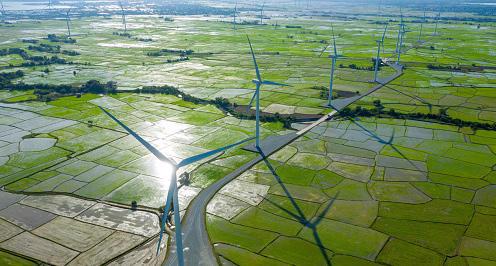Vietnam’s financial institutions could earn about $1.7 billion in revenue from issuing bonds to finance ESG (Environmental, Social and Governance) projects by 2025, but domestic banks have only issued $216 million worth of green bonds, a small number compared to the potential, according to the “Can Vietnamese banks seize the opportunity from green bonds?” report from McKinsey & Company.
In Vietnam, in the fields of energy, transportation, telecommunications, and clean water, project financing has grown year-on-year, from about $3 billion in 2018 to $38 billion in 2021. Renewable energy projects are driving this growth, reaching more than $10 billion a year between 2018 and 2020 and $21 billion in 2021.
Wind and solar power projects contribute greatly to driving demand in this sector. With the latest draft of Power Plan 8 and the commitment the Vietnamese Government made at COP26, the need to finance clean energy projects continues to increase.
In the context of the market having potential and that demand is increasing, banks will also benefit from developing this type of bond, especially when the green bond market is also supported by the government, with the introduction of a series of policies.
Depending on the level of ambition, banks can go one of three ways, according to the report.
Firstly, they can follow the trend by building operational capacity and meeting minimum regulatory requirements. This minimal-participation-oriented approach still ensures regulatory compliance but is unlikely to win the market.
Or banks can participate in the market by proactively adopting new standards and leading practices in the area of climate risk. They could develop specific products and services based on their customers’ green financial needs, setting important business goals for green products.
Finally, banks could position themselves as market leaders rather than being behind their peers, and aim to capture a large market share in convertible finance and green bonds. This requires actively reallocating funds to science-based environmental goals and identifying potential specific markets and business opportunities in key sectors.









 Google translate
Google translate